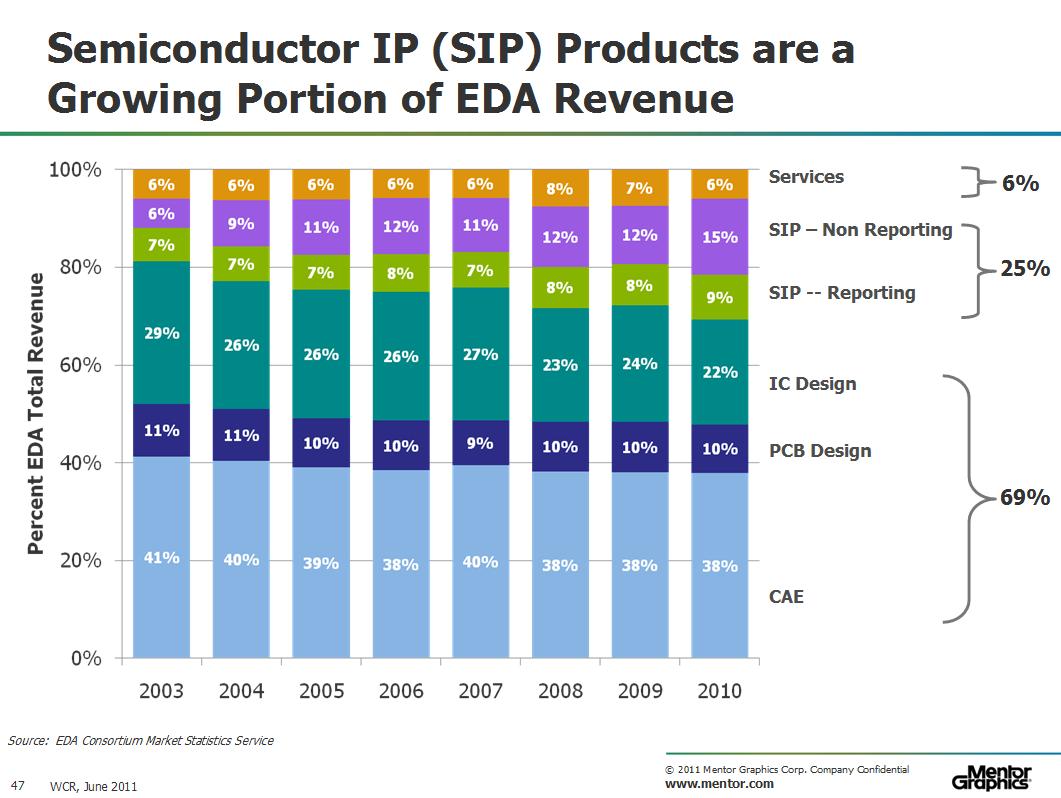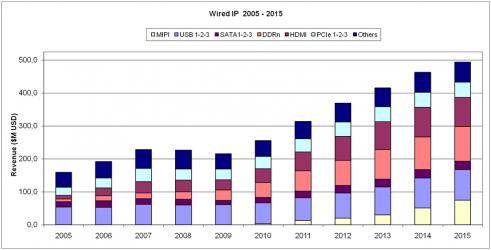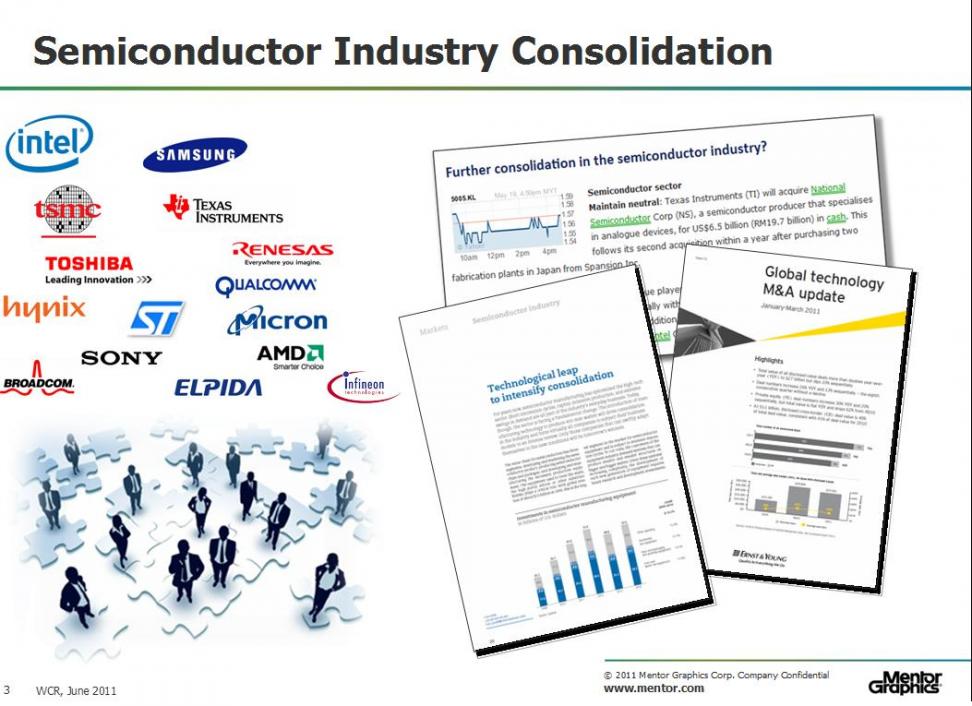After the mega IP acquisitions last year by Cadence (Denali) and Synopsys (Virage) a lot of people are wondering what is next for the commercial Semiconductor IP market. Let me offer my opinion as a person who works closely with foundries and their top customers and the opinion of Dr. Eric Esteve, an expert on interface IP.

The commercial semiconductor IP industry will experience exponential growth due to both the mobile internet explosion and the shortened shelf life of the end products we serve. On the foundry side, the complexities of shrinking geometries and increasing design requirements for high speed and low power devices will keep commercial IP vendors growing for years to come, my opinion.
At the 48[SUP]th[/SUP] Design Automation Conference commercial semiconductor IP vendors dominated the foundry partner space for a reason, foundries cannot succeed without them. The next generation of fabless semiconductor companies cannot succeed without them. The semiconductor design ecosystem cannot survive without commercial IP.
Eric Esteve recently completed a four part interview with Synopsys IP manager Hezi Saar which can be found HERE. I worked with Hezi at Virage Logic and now work with Eric at SemiWiki.com. You will be hard pressed to find more IP savvy guys than Hezi and Eric. If Interface IP touches your profession you will definitely want to read this interview and spend more time with Eric on SemiWiki.com.
Q: Eric, give us a quick introduction about your background as it relates to interface IP
A: I have spent 20 years working as a designer, then FAE, then Marketing for TI and Atmel, before working as a WW Marketing Director for PLDA, where I have launched…
Q: What are your high level thoughts about the semiconductor industry in general and mobile segment in particular?
A: The semiconductor industry is still growing, with an 8% CAGR for the last 20 years or so, but it is a matter of fact that there is a consolidation, and the ASIC or ASSP design starts are slightly….
Q: What do you believe are the challenges facing the mobile electronics industry?
A: I think some of the challenges the mobile electronic industry is facing are almost the same than for the other….
Q: What can you tell us more about the evolving time to market pressures?
A: Time to market for handset applications is probably the more stringent of the industry….

Q: Since you (and Synopsys) focus on interface IP what do you see as the overarching trends for interface IP?
A: Being strongly focused on Interface IP, since 2005, I have seen the massive adoption of the differential, high speed, serial communication techniques inside and outside…..
Q: What are the most promising interfaces used by semiconductor SoCs targeting mobile market segments and why?
A: Lets take TI’s OMAP5 an an example, we have pretty much the list of most promising interfaces for Application Processor SoC targeting mobile market segments…..
Q: You are projecting a very strong growth for these interfaces, almost 100% from 2010 to 2015. How do you explain this growth with your prediction you made about lower number of design starts going forward?
A: First, I should precise that different predictions, from different analyst, like Gartner has proposed during IP-SoC in December 2010, show a
Q: That’s interesting distinction between Gartner’s growth numbers and yours, what are the reasons for doubling the interface IP market while design starts decline?
A: The first reason is structural: yes the number of design starts per year declines at a 2 to 4% yearly rate, but the nature of the ASIC or ASSP SoC designs strongly change….
Q: Last thoughts about the mobile computing space as compared to traditional computing, storage, enterprise segments? How do you think the future will look like?
A: During the last few years, the most drastic change we have seen in the mobile computing space has been the democratization…..

The most frequent calls for help I get now are from fledgling IP companies. Literally a dozen of them and more to come as semiconductor company consolidation continues. Downsized silicon proven IP groups on the street and ready to go. The question is how will they differentiate and thrive? The answer of course starts with Eric’s industry reports on IP-Nest.
Note: To read/write comments you must be logged in
Share this post via:





Facing the Quantum Nature of EUV Lithography